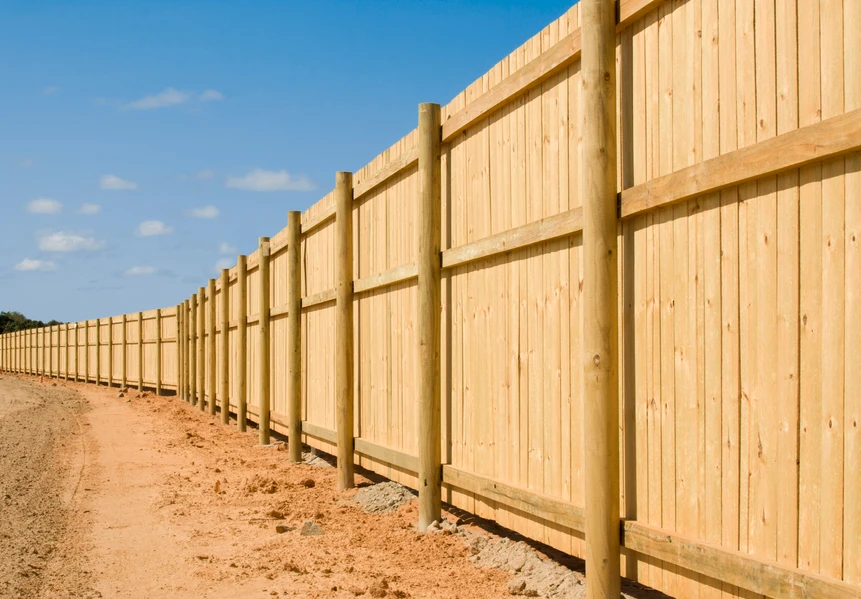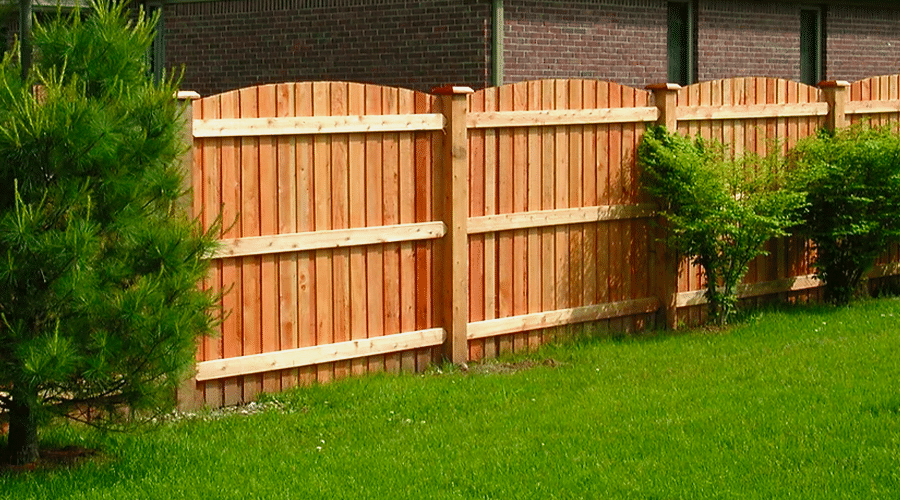A Comprehensive Guide to Fencing Install: What You Need to Know Regarding Fence Services
When it comes to mounting a fencing, you have actually obtained a great deal to contemplate. You'll need to evaluate your residential property and make a decision if you desire to tackle the setup on your own or employ a specialist.
Recognizing Different Kinds of Secure Fencing Materials
When you're selecting a fencing, recognizing the different kinds of fencing materials is essential. Each material uses distinct benefits and drawbacks, affecting your decision. Wood supplies a timeless appearance and can be personalized, but it needs routine maintenance and may rot in time. Plastic is low-maintenance and sturdy, resisting fading and insects, however it can be more expensive upfront. Chain-link secure fencing is cost-efficient and practical for enclosing big areas, though it does not have personal privacy and visual charm. Metal fencing, like wrought iron or aluminum, offers stamina and sophistication yet might require corrosion security. Compound products mix the finest of wood and plastic, using durability with a natural look. Consider your budget plan, preferred appearances, and maintenance choices when evaluating these options. Eventually, picking the ideal material will aid you create a fencing that fulfills your demands and improves your residential or commercial property's worth.
Analyzing Your Building and Fence Needs
Prior to you start your fencing setup, it's vital to assess your property limits and the function of your fencing. Recognizing regional laws and licenses will certainly additionally help you stay clear of any lawful issues down the line. By thinking about these variables, you'll ensure your fencing satisfies both your demands and community requirements.
Building Limits and Lines
Recognizing your residential property limits is crucial for a successful fence setup, as it not only helps you identify where your fencing will go but additionally assures you're valuing your neighbors' area. Begin by evaluating your residential property deed or study, which usually outlines the exact boundaries. You might also intend to speak with a professional surveyor if you're not sure.
Remember, regional zoning legislations may dictate fencing positioning and height, so inspect those policies too. Taking these steps guarantees your fencing is properly positioned and certified, making the whole procedure smoother for you.
Function of Fencing
Fencing serves multiple purposes that can considerably improve your residential or commercial property. It provides protection by creating a barrier that deters invaders and shields your valuables. Second, it offers privacy, enabling you to enjoy your outside space without stressing over spying eyes. Third, secure fencing can define your property limits, making it clear where your space ends and your neighbor's starts. Furthermore, it can boost the visual charm of your home, including personality and design while increasing curb allure. Finally, a well-placed fence can help take care of noise from neighboring roads or neighbors and even keep pets and children safe. By evaluating your details requirements, you can choose the best sort of secure fencing to accomplish these benefits successfully.

Local Rules and Permits
Exactly how can you ensure your fence installation follows local policies? Begin by talking to your local zoning office or community site. Fence Contractors. They often have standards about fencing height, products, and placement. You'll likewise intend to locate out if you need an authorization before beginning your project. Some locations need permits for any kind of new fencing, while others may just need them for taller frameworks.
Additionally, think about building lines and any type of easements on your land. Noting your boundaries can prevent disagreements with neighbors or possible lawful issues. By recognizing these regulations ahead of time, you can avoid pricey mistakes and establish your fencing is constructed to last, improving both your building's worth and your comfort.
Local Regulations and Permits for Fence
Before you start your fence job, it is necessary to inspect regional guidelines and get any necessary permits. Each city or region has its own guidelines concerning fence elevation, products, and placement. These guidelines ensure that your fencing abides with safety and security standards and neighborhood aesthetic appeals.
You might need to send a fence plan, outlining measurements and products. Some locations may even require a survey to verify property borders.
Neglecting to follow these regulations can lead to penalties or required elimination of your fencing, throwing away both money and time. Take the time to research and protect the proper licenses for a smooth installation procedure. This step is vital in making certain your project straightens with regional laws and neighborhood criteria.
Selecting In Between DIY Installment and Professional Providers
Are you thinking about whether to tackle the fencing installation yourself or work with a professional? This decision rests on several variables. Analyze your skill degree. If you come in handy and have experience with similar tasks, DIY could conserve you money. Nonetheless, be truthful concerning your capabilities; errors can lead to added costs and frustrations.
Following, take into consideration the time commitment. Mounting a fencing takes time, and if you're juggling a busy routine, employing an expert can guarantee it gets done efficiently. Additionally, think regarding the intricacy of the job. If your lawn has challenging terrain or certain style needs, experts bring know-how that can make a distinction.
Lastly, consider local laws. A specialist recognizes the licenses and codes needed, helping you stay clear of possible penalties. Inevitably, evaluate your skills, time, intricacy, and guidelines to make the most effective choice for your fencing task.
Step-by-Step Overview to Fence Installment
When you've decided to move on with your fence installment, complying with a structured step-by-step technique will certainly guarantee a smooth process. Start by noting the fence line with risks and string to imagine the design. Next off, inspect local laws to confirm conformity with elevation and home lines.
Dig post openings at the very least 2 feet deep, spaced according to your fence kind-- generally 6 to 8 feet apart. Insert the blog posts into the openings and fill them with concrete for security. As soon as the articles are set, affix the horizontal rails or panels, making certain they're level.
Check for any kind of loose connections and make necessary modifications. Your fence should now be prepared to enhance your property and give the privacy or protection you require!
Upkeep Tips for Durability of Your Fencing
To keep your fence looking excellent and long lasting longer, normal maintenance is key. You ought to establish a cleansing timetable, check for any kind of damages, and use safety coatings as needed. By remaining positive with these tasks, you'll ensure your fence stays durable and eye-catching for years to come.
Regular Cleansing Set Up
While it could be easy to forget, developing a normal cleansing routine is necessary for keeping the durability of your fencing. Beginning by washing your fencing with water a minimum of once every season to get rid of dust and debris. For wooden fences, use a gentle soap remedy and a soft brush to scrub away any kind of Get More Information mold or mildew. Do not neglect to inspect for any rust on steel fences; a cable brush can assist eliminate it, followed by a layer of rust-resistant paint. If you reside in an area with hefty plant pollen or dust, you might intend to enhance your cleaning regularity. Maintaining your fence clean not just improves its appearance yet likewise expands its life, saving you money over time.
Examine for Damages
Routinely examining your fencing for damages is essential if you desire to keep its stability and long life. Beginning by walking around your fence to look for noticeable signs of wear, such as splits, loose boards, or corrosion. Inspect for any type of signs of insects, like termites or woodpeckers, that could compromise your fence's framework.
Apply Safety Coatings
After inspecting your fence for damages, using safety coatings is a key step in guaranteeing its long life. Relying on the product, you'll intend to choose the right kind of layer. For wood fences, a high-grade sealant or timber tarnish can protect against wetness absorption and discourage pests. If your fencing is plastic or metal, consider a UV-protective spray or paint to stop fading and corrosion.
Ensure to clean the surface area completely prior to application, as dirt and crud can weaken the covering's efficiency. Apply the finish in dry climate for much better attachment, and don't neglect to adhere to the producer's guidelines for the very best outcomes. On a regular basis reapply every few years to keep your fencing looking excellent and standing solid against the components.
Cost Factors To Consider and Budgeting for Your Fencing Project
When intending your fence job, recognizing cost factors to consider is important to remaining within budget. Beginning by identifying the sort of material you desire, as expenses can differ greatly between wood, plastic, and metal. Do not fail to remember to variable in labor costs-- working with experts could save you time yet This Site can increase your general costs.
Following, measure your building to compute the straight video required, as this straight effects material prices. Additionally, consider any permits you could require, which can include in your spending plan.

Finally, it's a good concept to reserve a contingency fund for unanticipated expenditures. By intending carefully and taking into consideration these elements, you can create a reasonable budget that satisfies your secure fencing needs without breaking the financial institution.
Regularly Asked Questions
Exactly how Long Does the Ordinary Fencing Installation Take?
The average fence installment generally takes one to three days, relying on the fencing type and size of your lawn. You'll need to take into consideration any kind of hold-ups as a result of weather or permit requirements as well.
What Should I Do if My Fencing Is Harmed?
If useful link your fence is damaged, initially evaluate the extent of the damages. Repair small issues yourself, but also for significant troubles, consider getting in touch with an expert. Do not wait also long; it'll help avoid additionally issues.
Can I Mount a Fencing on an Incline?
Yes, you can set up a fence on a slope. You'll need to adjust your installation method, either by stepping the panels down or using a racked layout to guarantee stability and proper alignment with the terrain.
What Are the Best Practices for Fencing Paint?
To repaint your fencing successfully, begin with appropriate cleaning and sanding. Use premium paint and apply in even strokes. Don't neglect to select the best weather condition for painting, guaranteeing it's completely dry and moderate.
Just how Often Should I Evaluate My Fencing?
You ought to examine your fencing a minimum of twice a year, concentrating on signs of damage, rot, or rust. Normal checks help you catch concerns early, guaranteeing your fence remains tough and aesthetically appealing much longer.